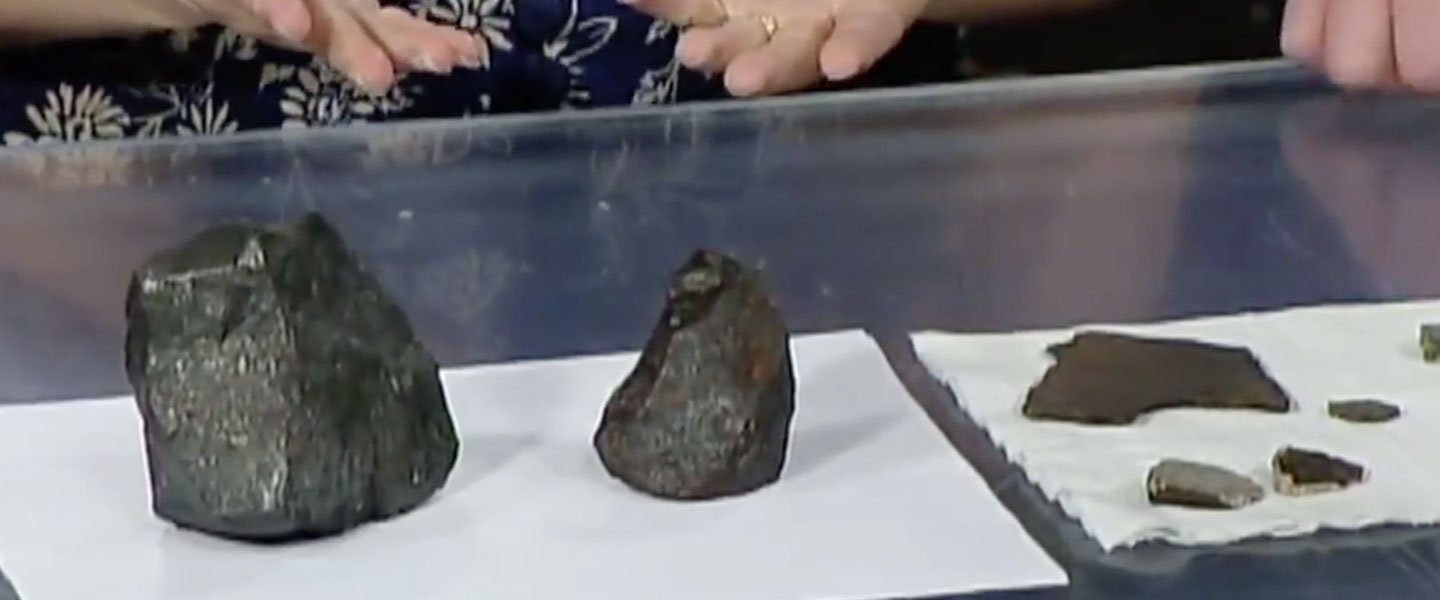Magnetic Money
It’s true, money is magnetic! You’ll need to get your hands on a super strong neodymium magnet to uncover an amazing secret.

When Hollywood features a meteor impact in a movie, it’s usually the end of life as we know it! Funny thing, though, your home has been bombarded by hundreds, maybe even thousands, of meteorites and you’ve survived it all these years. OK, meteorites like these are small… very small. In fact, they’re so small you might need a microscope to see them. All the same, your home was hit by them and you may be able to find some if you know the secret places to search.
Turn a sandwich bag inside out and drop the magnet into the inside-out bag. It’s best if the bag has no holes or tears in it. Squeeze as much air as possible out of the inside-out bag so it’s snug around the magnet. NOTE: Keep in mind that you’ll want a new bag now and then, too.
Keep the bag closed with something like a rubber band, a bag clip, or tape. Now you have a device that can locate and capture tiny iron metallic pieces found in soil and other materials for further study.
Look for loose materials in places like flower beds, backyard spaces, playground gravel, park areas, sandboxes, recently dug soil, sandy spots, rocks and gravel, garden dirt, debris in a rain gutter on a building, mud in a creek bed, or even potting soils. You get the idea.
Keep the magnet inside the bag and pull it slowly through the material you have to see what the magnet might attract. You’re kind of mining with the magnet.
When you’ve completed a few sweeps, tiny bits of material may be clinging to the magnet through the bag. Blow and shake off any loose material and then carefully reverse the bag so you can zip it closed. The material is now sealed inside the bag and the magnet is now in your hand. Time for a new bag.
Transfer the pieces you’ve collected to a small container to keep them separate. Date and tag the container with the location and the material you “mined” to make a more accurate analysis of the pieces later on. See the “Take It Further” section.
This is not a “one-time-and-done” activity. Anywhere you go, you can be on the look out for magnetic debris that has been scattered over the Earth’s surface. You may find very tiny fragments of iron, metal, or even whole meteorites anywhere you search.
Why might the debris in a rain gutter on a building be a great place to look for meteorite particles? Those particles may be space dust or micrometeorites and they’re constantly falling to Earth. Rain and snow wash them out of the air and they drop onto a roof. They end up being washed into the rain gutter and deposited there for you to find. You may need to sift the debris through an old window screen or fine mesh to separate the meteorites from the junk. You’ll have a pile of dust to pull your covered magnet-miner through to find them. Sometimes it’s easier to stir the dust into some water with the covered magnet and collect what you can that way.
Over time, you may find larger meteorites and before you take them out of the field (or wherever you find them), be sure to take pictures and make notes. Write down exactly where you are and what’s nearby. Gather data that will help determine exactly what you have and where it came from.
On larger samples, are surfaces a shimmery purple-black (think of an eggplant) or a dull, deep black? Fusion crust is the charred surface left behind from melting as the rock zoomed though the atmosphere. Fusion crust starts out shimmery black when the meteorite first hits Earth but then dulls with age and exposure to air and water. If there’s iron in the sample, it turns a rusty red, too. Does it look melted or cratered with bubble holes? That could be either a sign of having travelled through the atmosphere or that it’s just a piece of man-made industrial waste called slag. Are there many pieces that look alike or look like they might fit together? Some meteorites break up into pieces before or after they impact the ground.
Test your samples with these ideas:
A dry rain gutter on a building is a great place to search for meteorites. You’ll probably need a ladder and some adult help to get there, however. Be sure you understand how to use a ladder safely so you can do your “mining” without getting hurt.
Meteorite expert, Dr. Suzanne Metlay, was Education Programs Manager at Fiske Planetarium at CU-Boulder until 2008. Since then, she has also been the Operations Director at Secure World Foundation, a private non-profit, non-governmental organization based in Superior, CO. It’s dedicated to promoting cooperative solutions for space security.
Space security includes developing ways to avoid collisions of satellites from different countries as well as ways to prepare for asteroid impacts on Earth. It means working on an international level to get large companies and governments around the world to solve the problems of space junk and prepare a planetary defense against Earth-bound asteroids and comets.
When you’re talking science, it’s important to use correct terms and to use them correctly. Most meteors passing through the Earth’s atmosphere can be seen at night on their final path of vaporization. If they’re large enough, they can be seen during the day but it’s very rare. If a meteor survives its passage through the atmosphere and some part of it makes it to the ground, that part is called a meteorite. The “…ite” suffix means it’s now a mineral as in bauxite or pyrite.